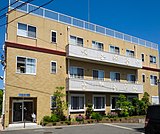Wikipedia:Main Page history/2019 July 20
From today's featured articleThe Siege of Berwick lasted four months in 1333, and resulted in the Scottish-held town of Berwick-upon-Tweed being captured by an English army commanded by King Edward III (r. 1327–1377). The year before, Edward Balliol had seized the Scottish Crown, surreptitiously supported by Edward III. After Balliol was expelled from the kingdom by a popular uprising, Edward III invaded Scotland. An advance force laid siege to the strategically important border town of Berwick in March; Edward III and the main English army joined it in May and pressed the attack. A large Scottish army advanced to relieve the town. After unsuccessfully manoeuvring for position and knowing that Berwick was on the verge of surrender, the Scots felt compelled to attack the English at Halidon Hill. They suffered a crushing defeat and Berwick surrendered the next day, 20 July. Balliol was reinstalled as King of Scotland after ceding a large part of his territory to Edward III and agreeing to do homage for the balance. (Full article...)
Recently featured:
Did you know...
|
In the news
On this dayDocumentary clip recounting the Viking 1 landing
Alexander the Great (b. 356 BC) · Tom Crean (b. 1877) · Heather Chasen (b. 1927) |
Today's featured picture

|
The Parkes Observatory is a radio telescope observatory in New South Wales, Australia, located 20 kilometres (12 mi) north of the town of Parkes. It was one of several radio antennae used to receive live television images of the Apollo 11 Moon landing on 20–21 July 1969. Its scientific contributions over the decades has led the Australian Broadcasting Corporation to describe it as "the most successful scientific instrument ever built in Australia" after 50 years of operation. The observatory, which opened in 1961, is run by the Commonwealth Scientific and Industrial Research Organisation (CSIRO), an independent Australian federal government agency, as part of the Australia Telescope National Facility network of radio telescopes. It is frequently operated together with other CSIRO radio telescopes to form a very-long-baseline interferometry array. This picture, taken in 1969, shows the Parkes Observatory's main 64-metre (210 ft) diameter radio telescope dish, around the time that it received transmissions from Apollo 11, with a crescent moon visible in the background. The photograph is part of CSIRO's ScienceImage archive. Photograph credit: CSIRO
Recently featured:
|
Other areas of Wikipedia
- Community portal – Bulletin board, projects, resources and activities covering a wide range of Wikipedia areas.
- Help desk – Ask questions about using Wikipedia.
- Local embassy – For Wikipedia-related communication in languages other than English.
- Reference desk – Serving as virtual librarians, Wikipedia volunteers tackle your questions on a wide range of subjects.
- Site news – Announcements, updates, articles and press releases on Wikipedia and the Wikimedia Foundation.
- Village pump – For discussions about Wikipedia itself, including areas for technical issues and policies.
Wikipedia's sister projects
Wikipedia is hosted by the Wikimedia Foundation, a non-profit organization that also hosts a range of other projects:
Free media repository
Wiki software development
Wikimedia project coordination
Free textbooks and manuals
Free knowledge base
Free-content news
Collection of quotations
Free-content library
Directory of species
Free learning materials and activities
Free travel guide
Dictionary and thesaurus



